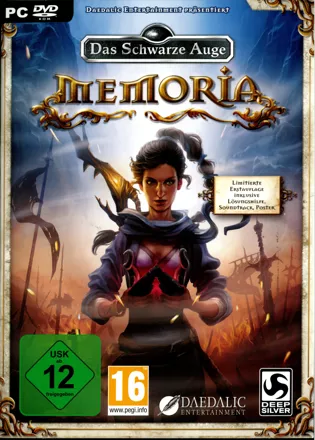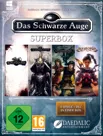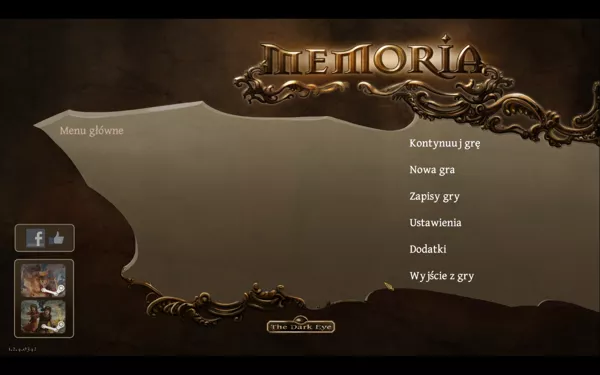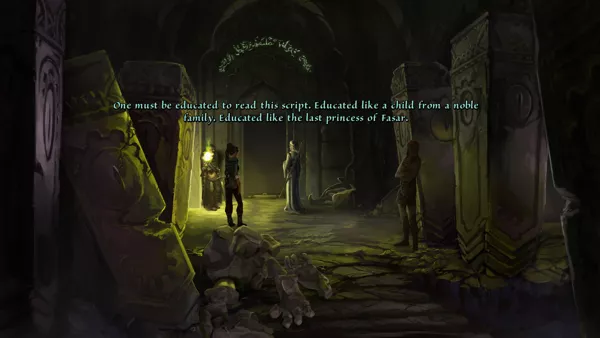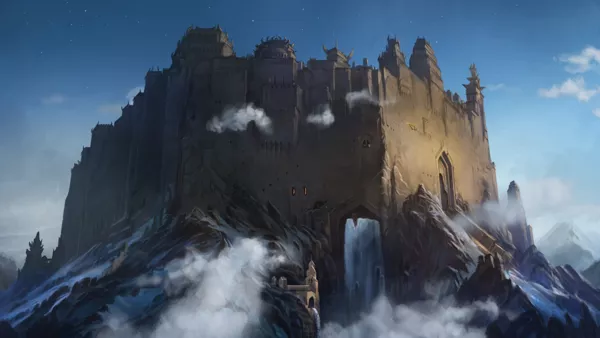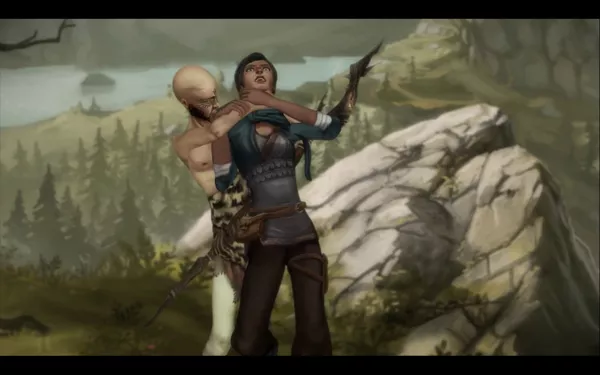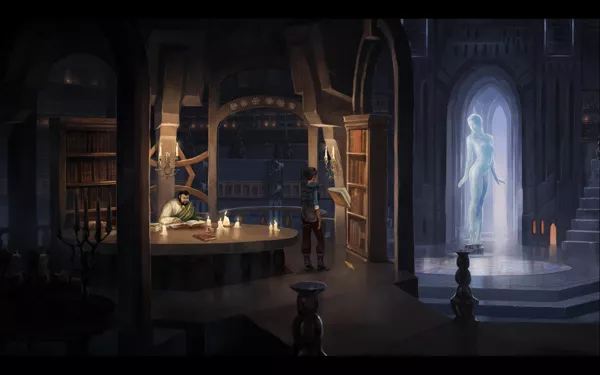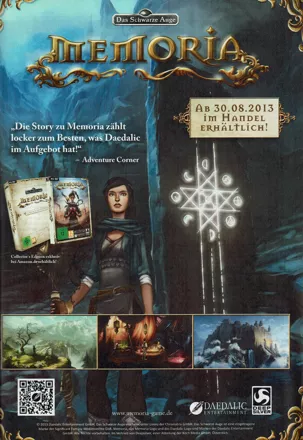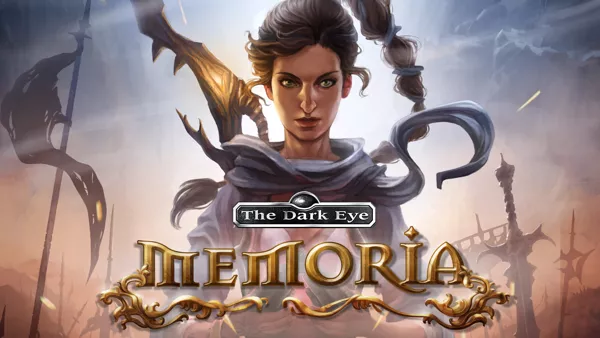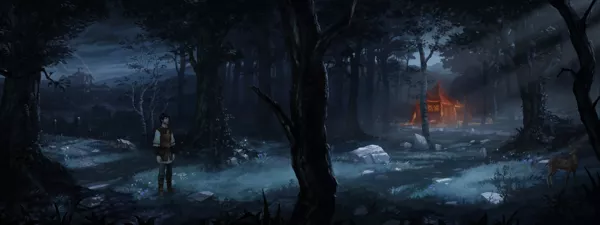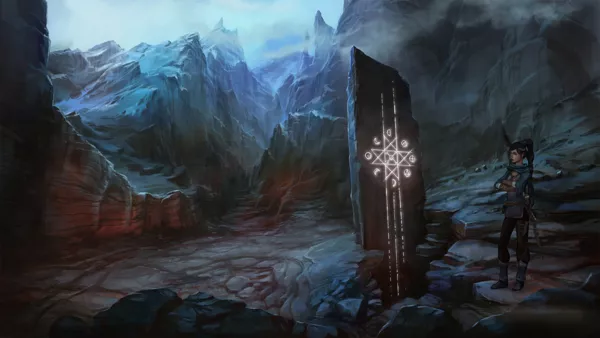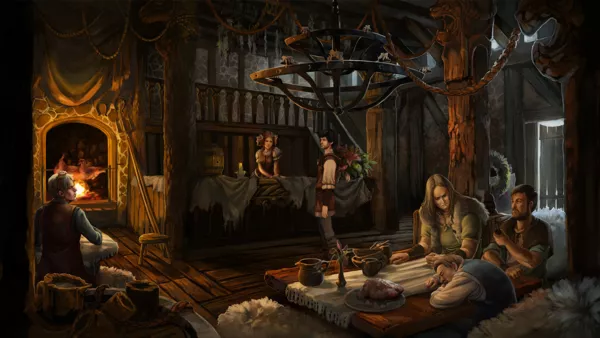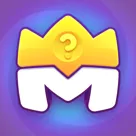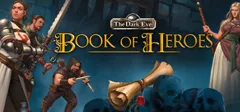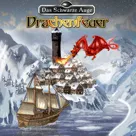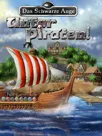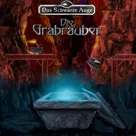The Dark Eye: Memoria
Description official descriptions
The game is a point-and-click adventure, a sequel to The Dark Eye: Chains of Satinav released a year before. Memoria is set in the realm of Aventuria ‒ the game is based on The Dark Eye universe, a fantasy role-playing game very popular in Germany. The story picks up shortly after the end of the previous game: our hero, a bird-catcher Geron, is travelling with a fairy, Nuri, only in the body of a raven. As he seeks for a cure ‒ any type of magic spell or artifact ‒ to transform the fairy back, Geron happens onto a travelling merchant promising to change Nuri back into a fairy. A deal is: Geron solves the riddle based on the tales of a long forgotten princess Sadja, and the merchant provides the magic spell. So is introduced the story of a second protagonist, Sadja, at the very beginning of the game.
We are once again in Andergast, Geron's home city and the capital of the kingdom of the same name. This time the events in the "real world" revolve around Geron completing pretty mundane tasks in Andergast and nearby forest. His goal is to learn more of Sadja's story. Her story, on the other hand, is an epic quest set some 450 years ago, covering ancient tombs, forests, mountains and fortresses. As Geron uncovers more and more of her past through journals and mysterious dreams, Nuri starts losing her memory of the time she were a fairy...
The gameplay is mostly traditional for point-and-click adventures, though, as it is often in Daedalic's adventures, there are some additional mechanics. Traditional gameplay is represented by items in your inventory which you can examine or use with objects around you. You can also combine them with other items you have. This point-and-click mechanic is accompanied by several spells your characters can cast: Geron can break/repair brittle items, while Sadja (shortly after the onset) can use up to three spells provided by her magic companion (an ability she, obviously, loses when they get separated). For example, the ability to send visions of nearby objects and people to the characters, so that you can mildly incline them to do something they don't want to. Memoria also features several puzzles where the player is expected to pay close attention to their environment or chose the correct actions.
In case the player gets confused, this game features tools to simplify solving puzzles. First, which is already customary, the "point of interest" are highlighted when you press Spacebar (or the corresponding button in the inventory). Second, you can enable combination helper through the Options. This tool makes your cursor glow as soon as you hover an item over a point of interest you can use it with (though, the helper is not consistently reliable). Finally, several time-consuming puzzles you may skip altogether. There are numerous cutscenes, all of them available later as an unlockable content, so you may watch them again. The game also has achievements: some are unlocked automatically as you progress through the story, others are connected to a specific path to solve some quest or an optional action you may or may not perform (eg. turn over a roast in a tavern).
Once again, the sequel features pre-rendered background art in the same semi-realistic style. Characters are implemented in a similar manner, though main characters (as the most animated ones) are based on 3D models with hand-painted textures.
Groups +
Screenshots
Promos
Videos
Add Trailer or Gameplay Video +1 point
See any errors or missing info for this game?
You can submit a correction, contribute trivia, add to a game group, add a related site or alternate title.
Credits (Windows version)
157 People (109 developers, 48 thanks) · View all
| A game by | |
| Executive Producer | |
| Project Management | |
| Story | |
| Puzzles | |
| Writing | |
| Based on characters created by | |
| Based on an idea by | |
| Story Consultant | |
| Brand Consultant |
|
| Additional Puzzle Design |
|
| Lead Scripting | |
| Scripting |
|
| [ full credits ] | |
Reviews
Critics
Average score: 78% (based on 23 ratings)
Players
Average score: 4.3 out of 5 (based on 11 ratings with 1 reviews)
The Good
I have to admit that I downloaded this game from GOG.com last week and what I liked most about it was the promise of a decent adventure game with a good story all for the price of £2.59. That's less than the price of a pint of beer and around what I pay for a supermarket sandwich neither of which last more than half an hour at most. So, for a tight Yorkshireman like me this scores very well in the value-for-money stakes.
The game itself weaves two stories together, Geron in the present and Sadja in the past. It's an interesting way to tell a tale and overall it works pretty well though I was a bit confused at the start which begins with the hero and the injured and enchanted Nuri, it felt as though I'd missed something and had started in the middle of the game.
For me the puzzles were OK but not exceptional. There's not one I can look back on and say 'Yes - I was pleased to have cracked that' whereas I can clearly remember solving some puzzles in some of LucasArt's and Sierra's classic adventures that I played maybe twenty years ago because solving them really felt like an achievement. That's not to say these weren't hard in places, I had to use a walkthrough a couple of times but whether that's me losing my touch or the nature of the puzzle I cannot tell.
The game plays well to. The characters move well and both they and the scenery are very well drawn. The voice acting is very good too, so is the simple but effective music.
There are ample save game slots, an autosave feature, it plays in a window as well as full screen, plenty of screen resolution options and other configuration tweaks which all helps make the game feel like a well thought out, quality production.
There are bonus items but they didn't really do anything for me as they consist of the cut scenes from the game that, once unlocked, can be watched again. They were good in the game but I didn't see the point of making them bonus items. There are also 'achievements' that are awarded during the game. Most are unlocked as the player progresses but to get them all the player must perform certain specific actions. Again, this is a feature that's for the perfectionist who wants to experience all the game has to offer but as there doesn't seem to be any reward other than ticking all the boxes I personally didn't see the point.
The Bad
So it looks good, has a decent story that's interestingly told, sounds good and has good content. The game mechanics show that thought has been put into the game's construction, I especially liked the 'Skip' feature in the maze section, so why do I say it's "good and not great"?
Well I think that's down to the pacing of the game, it never became really exciting. Though the story was a good one it was told with little drama and flair consequently, for me, there were no high's and lows. I was never immersed in the story so I never 'became' Geron or Sadja and lived the tale, it was always me playing a game and trying out all options until something worked.
The Bottom Line
Good value and worth playing.
You'll enjoy it but probably won't replay it.
Windows · by piltdown_man (236989) · 2015
Analytics
Upgrade to MobyPro to view research rankings!
Identifiers +
Contribute
Are you familiar with this game? Help document and preserve this entry in video game history! If your contribution is approved, you will earn points and be credited as a contributor.
Contributors to this Entry
Game added by Igor Pokrovsky.
Nintendo Switch added by Zaibatsu. Xbox One, Xbox Series added by Rik Hideto. PlayStation 4 added by Kam1Kaz3NL77. Blacknut added by Sciere.
Game added January 9, 2014. Last modified January 29, 2024.
